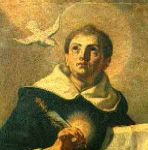The man born blind
Today's Gospel reading was the man born blind (Jn 9:1-41), which for us is a rather long pericope. The usual practice is to butcher it down to something shorter. What it gains in brevity it lacks in perspicacity. As a result, I was overjoyed when Father read the entire pericope from start to finish, all forty one verses. His homily was also masterly. I agree with everything in it, but I did want to explore something he didn't mention.but I did want to explore something he didn't mention.
One of the things that strikes me most about the Johanine Gospel is that more than the Synoptics it is concerned with Christ's Divinity (but not at the expense of his Humanity). But what is also equally interesting is the way in which John explores this. Had he used explicit formulary means, we might not have needed the great Oecumenical Councils, but then much would be lost in the poetry of the text. Its simplicity is one of the main sources of its beauty.
But its ability to convey this message is not lessened by being more implicit. Indeed, more than the other Gospels, John isn't just Christological in some academic sense, it is Christological experientially. To put it another way, John doesn't so much as tell as he shows. The whole structure of the Gospel is meant to show us Christ and teach us about Him.
If we consider the greater structure of the Gospel, this will help serve as illustration. The Gospel, as we all know, famously begins with a hymn that lays out Christ's eternal Divinity, coequal with the Father. The hymn makes clear what Christ later states "the Father and I are one." Then the Gospel goes on to show this to us. Each episode teaches us one or more important aspects of Christ, building a puzzle piece by piece to illustrate carefully the point that Christ was fully Divine while being fully Man.
The baptism shows His relationship to the Trinity and also serves as a Prophetic and Royal anointing. The Wedding at Cana demonstrates His power over the created world. Nicodemus illustrates that Christ is a gratuitous grace of Love. The Samaritan Woman illustrates He is the Water of Eternal Life. The Sixth Chapter, which my friend Charlie masterly covered in his sermon for today, shows that Christ is the Bread of Life. (I am aware I am skipping some stories, but that is not because they do not illustrate the point, but because I don't want this to just become a laundry list of Johanine pericopes. Also it is meant to tie into the Liturgical readings of the Lenten season.) And this pericope that we read today signifies that Christ is the Light of the World.
And there's an interesting and almost paradoxical quality to this light. This light, which should illuminate everything, is also by so doing a source of dissension. Almost like (but not like) Plato's Cave, the officials in the story cannot appreciate the light, because they have too long spent their lives in darkness. This is ironically touched upon when they rebuke the man born blind for daring to teach them when he was born mired in sin. From our perspective we know in fact that they too were mired in sin from birth (as were we all).
Just as Lent points us to the Cross and through it to the Resurrection, so too these pericopes. It is why John is such an appropriate Gospel for Lent. Each pericope of the Gospel points to Christ's Divinity, but for a purpose. It isn't just meant to answer some proto-Docetists. It is meant instead to say "Ok, so He's God, why is that important?" It is what Paul tells us in his Doctoral Dissertation, his Epistle to the Romans. What John shows us is that Christ's Divinity was essential for the Cross to have any saving power. That's why I believe so much of the Gospel is actually taken up with Resurrection pericopes, such as the Doubting Thomas or Christ's Three-fold admonition to Peter. These pericopes that lead to the Cross and stem from the Resurrection have Salvation as their focal point.
Which is, after all, what we're supposed to be reflecting on this Lenten Season.

No comments:
Post a Comment